
Types of Cake Explained: Foam Cakes vs Butter Cakes
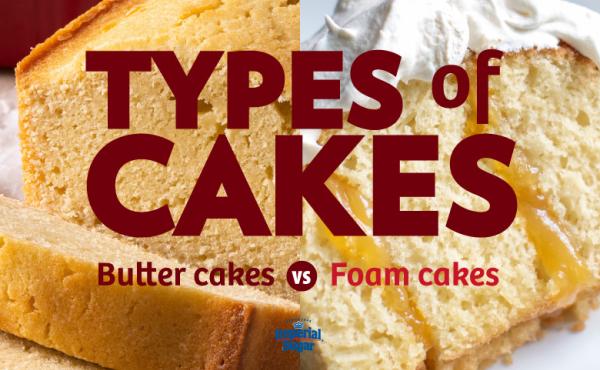
Ask anyone what their favorite cake is, and the answer will be as varied as the person giving it. Color, texture, taste, density – cake recipes, much like our own personalities, come in all shapes and sizes.
Baking a cake from scratch is a labor of love and an art form that requires both attention to detail and a solid understanding of the ingredients and techniques involved. As a home baker, it's essential to understand the different types of cakes and how each is created so you can choose the right recipe for your occasion and make a cake that not only looks beautiful but also tastes delicious.
In this article, we will explore the two main categories of cakes: Butter Cakes and Foam Cakes, and highlight the key differences between them. Whether you're a seasoned baker or just starting out, we will give you the tools and confidence you need to create stunning cakes that will impress your friends and family. So, let's get started and learn more about the world of cakes!
The Difference Between Butter Cakes and Foam Cakes
Professional bakers classify cakes by ingredients and techniques rather than flavors. At the most basic level, all cake recipes can be categorized as either a Butter Cake or a Foam Cake.
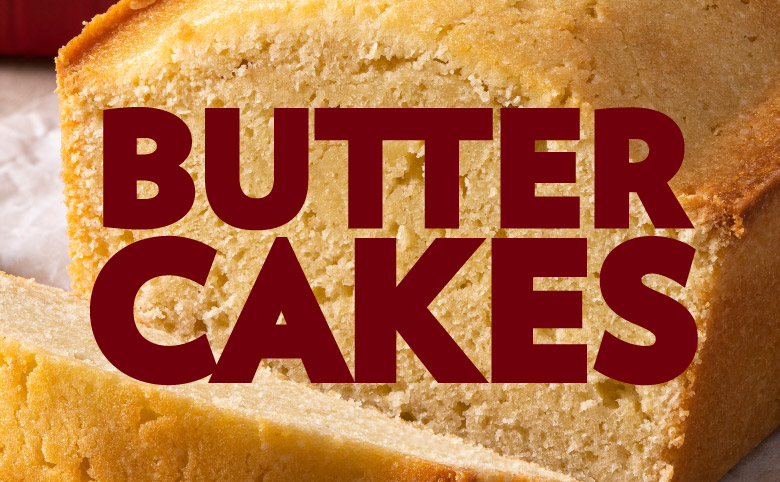
Butter Cake recipes depend on a chemical leavening agent – baking soda or baking powder and are distinguished by their inclusion of butter, shortening, margarine, or oil. Any recipe that starts with “cream butter and sugar” is considered a Butter Cake.
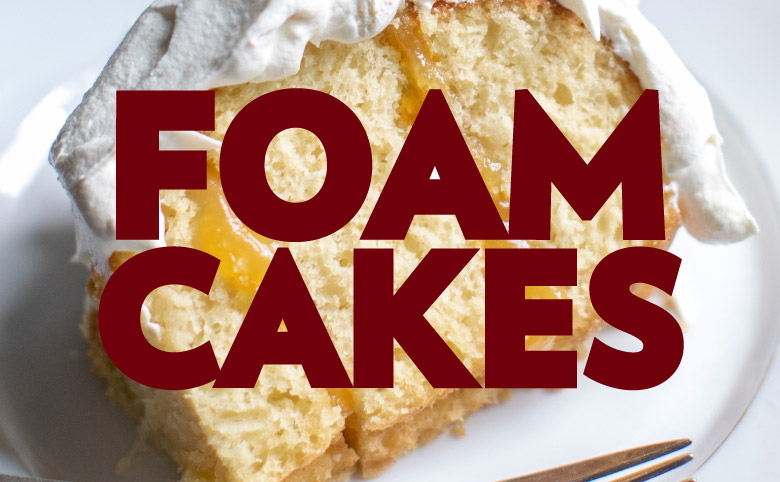
Foam Cakes, on the other hand, contain little to no fat or leaving agents. Instead, they are leavened by the air that is beaten into whole eggs or egg whites. Also known as unshortened cakes, Foam Cakes are light, airy, and spongey.
Because baking is equal parts art and science, it’s essential to understand the basics before improvising. As my grandmother used to say, “you better know the rules before you break them.” Once you understand the different types of cakes, and with patience and practice, you’ll be baking cakes from scratch like a pro.
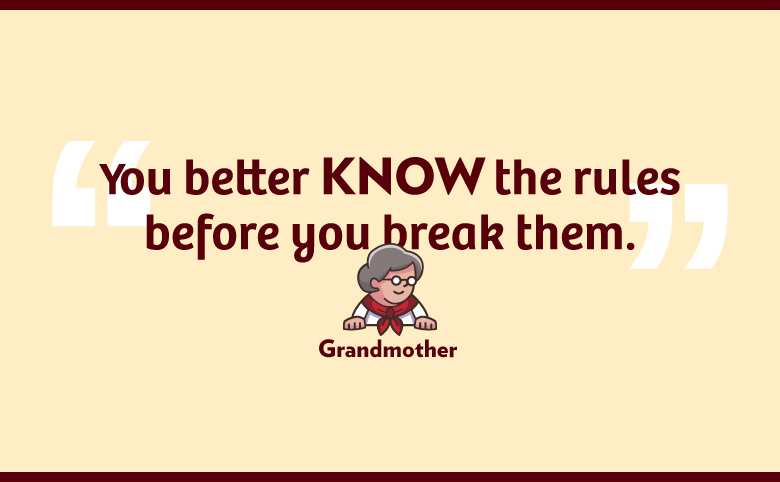
Different Types of Butter Cakes
Butter Cakes begin with softened butter or shortening, creamed to incorporate air cells that lighten the mixture. Too much air creamed into the batter results in a coarse grain. Too little results in a tight cake that doesn’t rise. Creaming the fat physically leavens the cake and creates an environment where fats and liquids are suspended. Fats and liquids typically do not blend, but the mixture emulsifies as the eggs are added. The fats and liquids are suspended, ensuring the batter will hold the additional liquids and flour necessary to make a delicious cake. Tender yet sturdy, Butter Cakes can withstand the addition of frostings, fillings, and buttercreams without collapsing or becoming too dense.
- Pound Cake
- American Yellow Cake
- White Cake
- Chocolate Cake
- Flourless Chocolate Cake
- Red Velvet Cake
- Carrot Cake
- German Chocolate Cake
- Hummingbird Cake
Pound Cake
The original recipe for Pound Cake dates to the early 1700s and was historically made using one pound each of four ingredients - butter, sugar, eggs, and flour. The ratio of 1:1:1:1 is why the French call this cake “quatre-quarts,” or four quarters. Over time, the basic pound cake recipe was reduced to make a smaller cake, although the 1:1:1:1 ratio remained the same. The genius of the classic Pound Cake is that you don’t even need a recipe per se. Just weigh your eggs in the shell and match the weight in flour, butter, sugar, and flour.
The classic pound cake recipe has been adapted as tastes have changed to create lighter versions. For example, baking powder and/or baking soda are often added to aid leavening, and part of the butter is replaced with oil to increase moistness. Sour cream and or milk can also be used to increase tenderness or balance structure. Professional chefs have gotten creative over the years, and Imperial Sugar is no exception. You can find 45 different pound cake recipes on our website, with more added yearly.
If you want to start a rowdy conversation, ask any baker what they think a “real” Pound Cake is. Traditionalists want a dense, moist cake with a pronounced buttery flavor baked in a bundt or loaf pan. Others prefer a very tender and moist (although less fluffy than an American yellow cake) cake with added flavorings and mix-ins. The basic Pound Cake recipe is highly versatile. Vanilla, citrus zest, extracts, cocoa, nuts, dried fruits, and teas can be added without changing the outcome. Top it with a powdered sugar glaze, whipped cream, buttercream, chocolate ganache, caramel sauce, fruit spread – or simply a sprinkling of powdered sugar. The possibilities are endless.
Examples: 7-Up Pound Cake, Strawberry Cream Cheese Pound Cake, Luscious Lemon Pound Cake, Brown Sugar Pound Cake
American Yellow Cake
One of the most popular cakes in America, the Yellow Cake, is used for all types of celebrations –birthdays, weddings, showers, holidays, and more. In home kitchens, Yellow Cake is usually prepared with butter, while commercial versions are generally made with vegetable oil. Although I’ll admit, I prefer butter for its delicious flavor. Yellow cake is made with whole eggs, giving it its yellow hue. Yellow Cake is often filled with fruit jams or buttercream and most often frosted with vanilla buttercream or chocolate buttercream.
Examples: Classic Yellow Vanilla Cake, Cherry Pineapple Upside Down Cake, Coffee Cake, Crumb Cake, Very Strawberry Cake, Southern Praline Cake, Very Lemon Sheet Cake
White Cake
The most significant difference between Yellow Cake and White Cake is that the latter is made with only egg whites instead of whole eggs. The absence of yolks ensures a white crumb. This cake is usually made using cake flour instead of all-purpose flour. Cake flour contains less protein (gluten-forming strands), resulting in a finer grain and slightly sponge-like texture. Some recipes are formulated to add egg whites to the creamed butter. Other recipes require egg whites to be whipped and gently folded in at the end of the batter.
Examples: Frosted Classic White Cake, White Cake from Scratch, Raspberry White Chocolate Sheet Cake, Pink Velvet Cake
Chocolate Cake
America has a love affair with Chocolate Cake for a good reason. It is moist, tender, and flavorful. It’s thought that chocolate was first introduced into cake batter in the 17th century when Dr. James Baker developed a way to grind cacao beans. Chocolate Cake is flavored with cocoa, melted chocolate, or whipped cream.
Chocolate Cake obtains its moistness from two key ingredients - oil and baking soda. Many chocolate cake recipes use oil only, while some use a combination of oil and butter. Oil provides tenderness and moistness. Baking soda is added to Chocolate Cakes as it leavens and darkens the chocolate color. However, baking soda also tenderizes the crumb of the cake, making the cake softer. Baking soda, although a tenderizing agent, is not often used, if at all, in yellow and white cakes as it darkens the crumb. Chocolate Cake is baked in round pans for a layer cake and 9 X 13-inch pans for sheet cakes. The most popular frosting for a Chocolate Cake is chocolate buttercream, but it’s equally scrumptious with a chocolate ganache or chocolate fudge frosting.
Examples: Peanut Butter Chocolate Drip Cake, S’Mores Four Layer Cake, Molten Chocolate Cake, Black Forest Cake, Devil’s Food Cake, Coca-Cola Chocolate Cake
Flourless Chocolate Cake
As the name implies, a Flourless Chocolate Cake contains no wheat flour, making it a favorite of people who are gluten sensitive. Instead, some Flourless Chocolate Cake recipes are made with cocoa powder, almond flour, and/or hazelnut flour to enhance flavor and lend a luxurious mouthfeel. These types of cakes are typically served without being frosted.
Example: Flourless Chocolate Cayenne Cake
Red Velvet Cake
Red Velvet Cake is a favorite in the South with its deep red crimson color, velvety crumb, soft texture, and mild cocoa flavor. Traditionally, Red Velvet Cakes had a reddish-brown hue caused by the chemical reaction between non-Dutched cocoa powder, buttermilk, and vinegar. In the 1940s, cocoa processing advanced, which meant the batter no longer turned red when introduced to the acids. But by then, people had fallen in love with this ruby-hued cake. Fortunately, around the same time, Adams Extract began mass-producing a red food dye that brightened up this beloved southern recipe once more.
The perfect Red Velvet Cake is a balance. Vinegar and buttermilk add a bit of tanginess that complements the sweet cream cheese frosting with which it is typically topped. And while we still use red food coloring in today’s Red Velvet Cake recipes, it’s essential to use as little as possible. Too much food dye can result in a chemical or bitter aftertaste.
Examples: Signature Red Velvet Cake, Red Velvet Cream Cheese Bundt Cake, Mini Red Velvet Lava Cakes
Carrot Cake
Carrot Cake can be made either with butter or oil or a combination of the two and incorporates grated carrots, raisins, walnuts or pecans, and spices into the batter. Food historians believe Carrot Cake evolved from carrot puddings, which used carrots for sweetness in the place of sugar. Carrot Cakes are typically frosted with cream cheese icing. Select organic or prime carrots to ensure a sweet and tender outcome. The leavening agent in Carrot Cake is baking soda, which makes the cake rise and tenderizes the crumb, providing a moist, soft cake.
Examples: Carrot Cake, G. Victoria Carrot Cake, Pumpkin Carrot Cake, Carrot Cake Bars
German Chocolate Cake
With its delicious coconut pecan icing, this mild chocolate-flavored cake is a favorite by many. It is made using the creaming method- creaming butter and sugar. At the end of mixing, egg whites are whipped to the meringue stage and folded into the batter. This technique results in a tender and moist cake. Possibly one of the more difficult cakes to frost as this cake is soft and fragile. Surprisingly, German Chocolate Cake was invented in America and is not typically found in German pastry shops.
Examples: German Chocolate Cake, Disney’s German Chocolate Cake, German Chocolate Cupcakes
Hummingbird Cake
Hummingbird Cake can be made with butter, oil, or a combination. A spiced cake with a tropical flair, the Hummingbird Cake includes mashed bananas, crushed pineapple, and chopped pecans. A Hummingbird Cake is very sweet, which is why it is typically frosted with cream cheese frosting. The tanginess of the cream cheese balances out the sweetness of the cake. A staple in the southern U.S., this fruity cake’s origins can be traced much further south, all the way to the island of Jamaica. It’s thought to have been created in the 1960s and was included in a 1968 press kit from the Jamaican Tourist Board as part of a collection of recipes from the island.
Examples: Chef Eddy’s Hummingbird Cake, Hummingbird Cake, Hummingbird Cupcakes
Different Types of Foam Cakes
Foam Cakes are based on whipped egg foams. Some recipes contain chemical leaveners, but the air whipped into the eggs is the primary leavening agent. Typically Foam Cakes have a higher proportion of eggs to flour. With Foam Cakes, it is best to use weak or low-protein flour to keep the cake from toughening up. Foam Cakes contain little to no fat. Moisture in the eggs develops the flour’s protein, making foam cakes springy, airy, and elastic. Foam Cakes are resistant to crumbling, which makes them a good choice for roll cakes. Because Foam Cakes are fragile, the dry ingredients are gently folded into the wet ingredients to minimize deflating the air cells.
Sponge Cake
One of the oldest cake recipes ever recorded is the Sponge Cake in 1615 by the English poet Gervase Markham. Sponge Cakes are with separated eggs. First, egg yolks are whipped with sugar to a thick, yellow color. Egg whites are whipped with sugar to firm but not dry peaks and then folded into the egg yolk mixture and lastly, the flour is folded in. Sponge Cakes are primarily leavened with air, but sometimes baking powder may be added. Properly made, this results in a light and fluffy texture. Eggs give a Sponge Cake its structure, and sugar makes the cake tender. Too much sugar can weaken the crumb structure, so it’s essential to have a good balance between the two ingredients.
Sponge cakes tend to be dry as they contain no added fats. Therefore, they are typically moistened with liquor syrups or milks. Often filled with Crème Chantilly and fruits, Sponge Cakes are best when served the day they were prepared.
Examples: Tres Leches, Doberge Cake, Pudding Cakes, Battenberg Cake, Madeleines, Roll Cakes, Rigo Jancsi
Genoise
Genoise is a classic European-style cake in which whole eggs are whipped with sugar until very light and fluffy. The finished cake has the same ingredients as sponge cake - eggs, sugar, vanilla, and flour; however, the eggs are beaten whole, and a small amount of melted butter or oil is added for flavor after mixing. Eggs and sugar are heated over a water bath, whipped until very thick, and then flour is folded in. Genoise Cakes are leavened by the air and beaten into the egg and sugar mixture. As such, baking a Genoise takes practice as adding melted butter to a lightly whipped mixture can deflate the air bubbles resulting in a heavy cake. Genoise Cakes are more tender than Sponge Cakes and less sweet. Often Genoise is soaked with a flavored syrup or liqueur and filled or layered with whipped cream, jams or jellies, or fresh fruit.
Examples: Genoise Cake, Tiramisu Layer Cake, Lemon Coconut Roulade
Angel Food Cake
Probably the most well-known of foam cakes, an Angel Food Cake is a tall, white, fat-free cake that is leavened with a large quantity of stiffly beaten egg whites. Named after its cloud-like appearance, Angel Food Cake contains only a few ingredients – egg whites, sugar, cream of tartar, flour, salt, and flavorings. Angel Food Cakes have the lowest fat content but the highest sugar content of all the Foam Cakes, as sugar is used to stabilize the egg whites. Because of the high air volume, extra care must be taken when folding in the dry ingredients to avoid collapse.
Typically baked in an ungreased tube pan, ring pan, or large loaf pan, Angel Food Cakes should be inverted as soon as they are removed from the oven and left in the pan to cool. This method allows gravity to keep the cake from collapsing and sticking to the pan. Angel Food Cakes are not usually frosted as it would add weight to the cake. Instead, they are served plain or topped with whipped cream, fresh fruit, or glazes.
Examples: Lemon Angel Food Cake, Marbled Angel Food Cake, Angel Food Cake, Peach Cobbler Angel Food Cake
Chiffon Cake
While similar to an Angel Food Cake in texture and appearance, a Chiffon Cake includes egg yolks and oil, resulting in a richer, moister, and more tender cake. Chiffon Cakes are usually leavened with whipped egg whites but may contain baking powder. The egg whites are whipped to soft peaks and folded into a mixture of yolks, sugar, oil, flour, and flavorings. Like Angel Food Cakes, Chiffon Cakes are baked in an ungreased tube pan to allow the batter to cling to the sides of the pan as it rises. Chiffon Cake is a very light, tender cake with a delicate flavor. Popular flavor additions are lemon, orange, coffee, or tea.
Chiffon Cake is one of the few desserts whose history can be traced with certainty. In 1927, a California insurance salesman – Henry Baker – invented a cake he named the Chiffon, as it was as light as Angel Food Cake but as rich as a Pound Cake. He kept the recipe secret for years, but in 1974 when he sold the formula to General Mills, it became common knowledge that the secret ingredient was vegetable oil.
Examples: Lemon Orange Chiffon Cake, Chiffon Cake, Chocolate Peppermint Chiffon Cake, Banana Cream Chiffon Cake
Meringue
Meringue is made with egg whites and twice as much sugar by weight. Hard meringue is piped into disks or other shapes and dried in an oven at a low temperature. The low temperature and time evaporate the moisture in the eggs and create a light, crisp, honeycomb-like structure with a chewy interior and melt-in-your-mouth quality.
Examples: Pavlova, Mocha Meringues, Chocolate Meringue Cake, Blueberry Sorbet Baked Alaska
Torte
Traditionally, Tortes are a cake made with little to no flour. Instead, eggs, sugar, meringue, nuts, or breadcrumbs are the main ingredients. Occasionally, Tortes are baked with a Sponge Cake base, and almond or walnut flour is used sparingly. As a result, Tortes are denser and richly flavored. Multi-layered and shorter in height than traditional cakes, Tortes are usually soaked or glazed in syrup or liqueur to add moisture. Filled with buttercream, ganache, jam, whipped cream, mousse, or custard and topped with rich, sweet icing, Tortes are popular in France, Austria, Germany, and other Scandinavian countries.
Examples: Walnut and Strawberry Torte, Opera Torte, Sacher Squares, Concorde Torte
Dacquoise
A Dacquoise is a meringue in which nut flour has been folded in. Most often made with almond or hazelnut flour, a Dacquoise is a tender, chewy, and very flavorful type of meringue. Dacquoise is often filled with buttercreams, mousses, ice creams, or sorbets.
Roulade
A Roulade Cake is a French phrase for a Swiss or Jelly Roll. It is a Foam Cake rolled into the shape of a cylinder and filled with jam, whipped cream, berries, buttercream, or ganache. A Roulade can be made with either a Sponge Cake base or a Meringue, otherwise known as a Pavlova Roll.
Examples: Lemon Coconut Roulade, Chocolate Praline Roulade, Unicorn Cake Roll
When is a cake not a cake? When it’s an Icebox Cake or a Cheesecake. While these two favorites don’t fit neatly into the Foam Cake or Butter Cake category, we couldn’t leave them off the list.
Icebox / Refrigerator Cakes
Icebox and refrigerator cakes are the easiest cakes to make. To prepare one, vanilla wafers or Graham crackers are typically layered with whipped cream or pudding and, if desired, fruit. After a full day or night in the refrigerator (icebox), the cream or pudding sufficiently moistens the wafers or graham crackers, which now are molded together, resulting in a sliceable dessert. Not only in America, but many hobby bakers worldwide use store-bought cookies to make icebox cakes. Maria cookies are frequently used in Mexico, while the French reach for their famous Petit Beurre.
Examples: Mango Coconut Icebox Cake, Old Fashioned Chocolate Icebox Dessert, Twix Icebox Cake, Strawberry Refrigerator Cake
Cheesecake
More custard than cake, Cheesecake is a baked custard that contains smooth cheese such as ricotta, cream cheese, or cottage cheese. Besides cheese, sour cream or heavy cream is often added along with sugar, eggs, and vanilla. Most Cheesecakes sit on a crust made of crushed dry cookies, graham crackers, ground nuts, or a shortcrust mixed with a small amount of sugar and butter. Often the crust is baked separately to ensure a crisp, non-soggy base. New York-style Cheesecakes are made with cream cheese for a dense and rich texture. Italian-style Cheesecakes are made with ricotta cheese and are light and fluffy.
Baked cheesecake is placed in a water bath to ensure that it will be baked in even heat. This prevents rubbery edges, sunken or cracked centers, and grainy texture. Non-baked cheesecake is often thickened with a small amount of gelatin to ensure a proper setting. Other no-bake Cheesecake recipes call for refrigeration or are frozen. Since Cheesecake is somewhat neutral in taste, it lends itself well to being flavored with countless options. Cheesecakes can be decorated with any fruit, Crème Chantilly, chocolate sauce, etc.
Examples: Triple Coconut Cheesecake, Chocolate Chip Cookie Dough Cheesecake, Praline Pumpkin Cheesecake, Banana Pudding Cheesecake
For more baking tips and tricks, visit Imperial Sugar Sweetalk’s blog.
- How to Make Layer Cakes Like a Pro
- How to Keep Your Cheesecake from Cracking
- What Kind of Flour is Best for Baking
- 10 Tips for Pound Cakes
PIN IT!
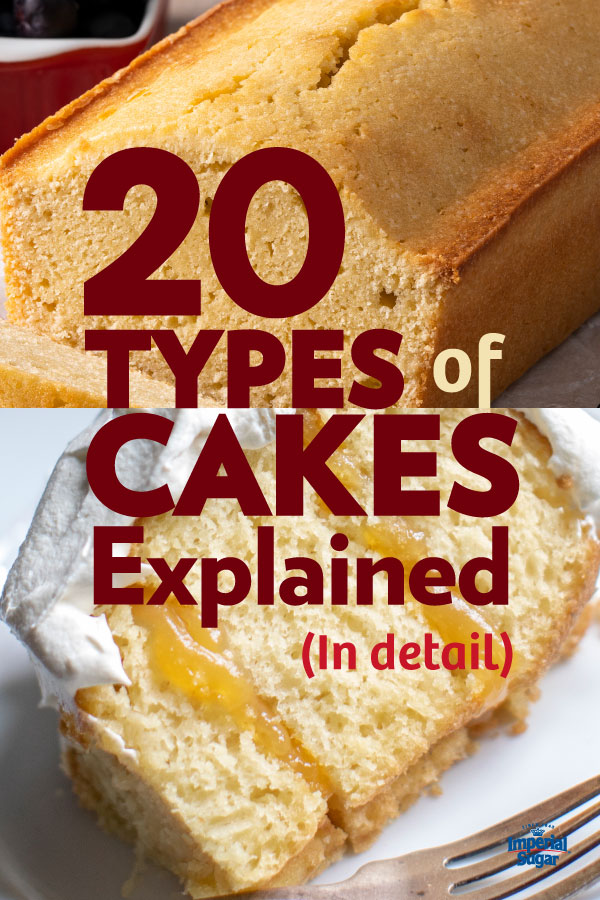
 then
then  Add IMPERIAL SUGAR to Home Screen
Add IMPERIAL SUGAR to Home Screen
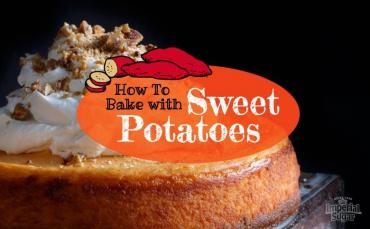
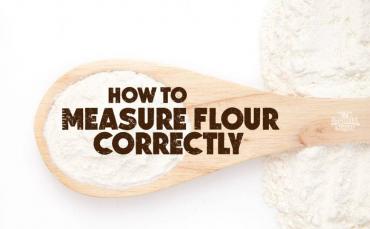
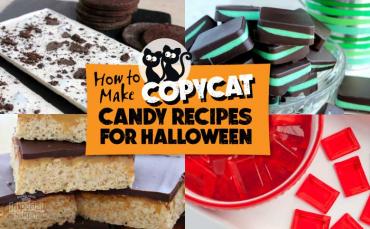
Sign in or create an account
You need an account to like and rate recipes, comment, and share a recipe with the community.
Continue with Facebook